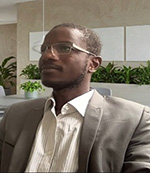 |
||
Home > TERATEC FORUM > Workshops > Workshop 4
TERATEC 2025 Forum |
|
HPC, AI and quantum digital technologies in healthcare
Chaired by Yves Vandenbrouck, Research Director, CEA
and Christian Saguez, Co-founder and Honorary Chairman, Teratec
Advancing protein design with AI
By Seydou Traore, Ph.D. AI-Assisted Biologics Design Expert, InstaDeep
The goal of protein design is to create new proteins with specific functions or improve existing protein functionality. Over the past 30 years, significant advancements in this field have led to successful applications in biotechnology and therapeutic development.
Deep learning and AI-driven advancements in protein structure prediction have paved the way for a transformative decade in protein science, opening up new possibilities in the realm of protein design. Progress in AI model development, accumulated publicly available protein data, and advancements in computational infrastructure have all contributed to these advancements.
The creation of new enzymes, design of antibodies for challenging targets, and de novo design of protein binders from target structures are just a few of the recent successes in this field. The full potential of protein design is yet to be realized. In particular, increased availability of functional biological data and multimodal protein design models will significantly impact biotechnology and biopharmaceutical development. The next decade will likely see AI agents transform the industry by optimizing research planning and prompt-driven protein design.
 |
Biography: Seydou Traoré, PhD, is a Senior Applied Research Scientist at InstaDeep, a leading AI company that develops state-of-the-art AI solutions for biology and decision-making systems. Seydou is an AI expert with over 15 years of R&D experience, specializing in biologics design and discovery. His core expertise lies in bioinformatics, machine learning, data science, and scientific computing, with a focus on utilizing AI and cloud technologies for molecular modeling and engineering. Dr. Traoré's work contributes to advancements in biotechnology and healthcare. |